Is located in Banjar Goa, Bedulu village, Blahbatuh subdistrict, Gianyar regency, it is about 5 km from Ubud. Is easy to find using map, below is the location of Goa Gajah.
Goa gajah on map. .
Goa Gajah has been known since the reign of some kings, among others are : Sri Dharmawangsawardhana Marakatapangkajastano Tunggadewa ( 1022 AD ), King Anak Wungsu (1053 AD ), Paduka Sri Mahaguru (1324 AD).
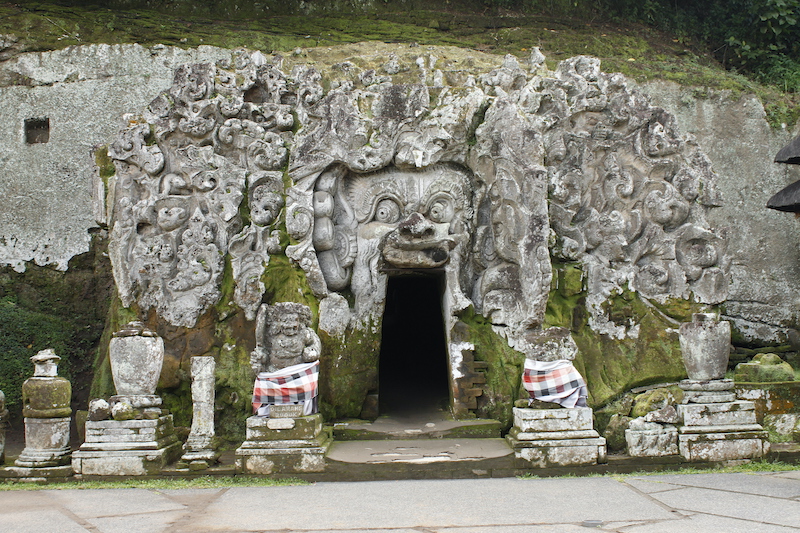
Mpu Prapanca on his book Negarakertagama, during the reign of Hayam Wuruk king in the Majapahit era wrote that Lwa Gajah is located in Bedutu village as the hermitage place of Sang Bodadyaksa.
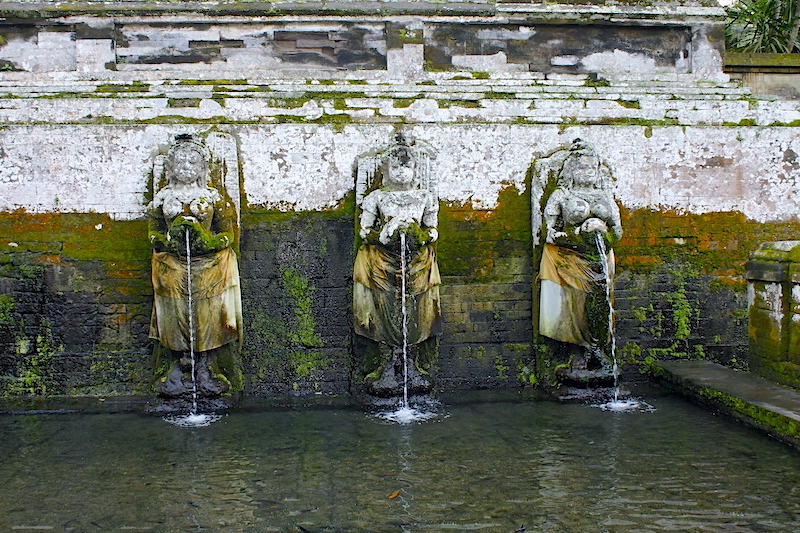
The term “Kunjarakunjapada” is also mentioned, which means “Kunjara dormitory.” In Sanskrit, “kunjara” means elephant. This dormitory refers to the one of Rsi Agastya, located in Mysore, South India, where many wild elephants lived around it. It is possible that Goa Gajah was built to remind people of the Kunjarakunjapada dormitory in India.
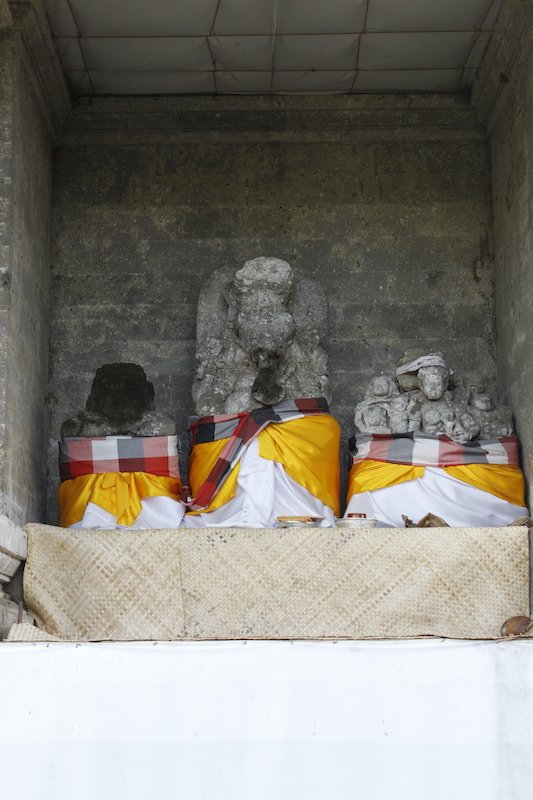
The discovery of Goa Gajah began with a report by LC. Heyting, an official of the Netherlands East Indies, in 1923. He reported finding a Ganesha statue, Trilingga, and a Hariti statue to the government. Later, in 1925, Dr. W.F. Stutterheim conducted further research. In 1950, the Archaeological Sites Office continued the investigation.

In Indonesia, research and excavation of ancient buildings in Bali, led by J.L. Krijgman, took place from 1954 to 1979. During this time, an ancient holy water pond was discovered, featuring six statues of women. These statues are believed to emit cleansing vibrations, which continue to attract visitors seeking spiritual purification.
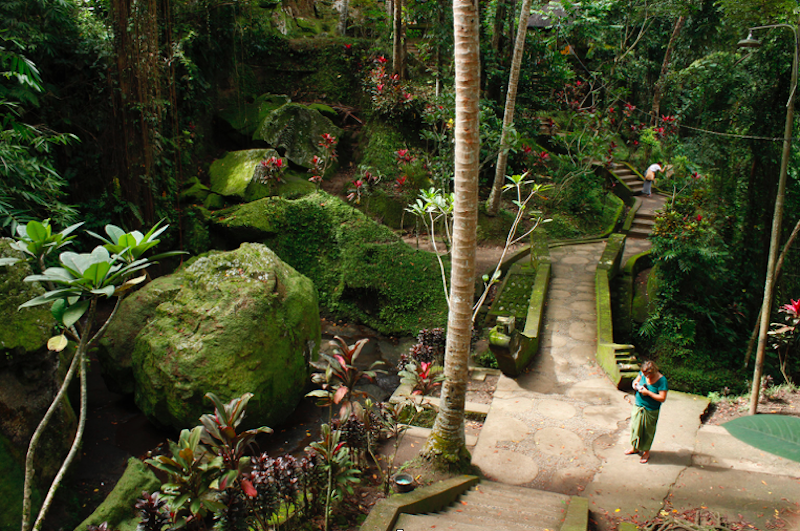
There is building that holds the statue of Ratu Brayut or Hariti in front of the cave According to the archaeologists, Haritihad an evil character in the beginning but after learning Buddhi’sm her evil nature is turned into children’s lover, as seen on the statue. .
On the upper right side of the cave wall, there is a writing of “Kuman” and “Shy Wangsa” written in Kadiri Kwadrat letters which meaning could not be certainly known by the historians. According to archaeological research of the statues art from and ancient holy water pond that exist in the Goa Gajah is believed to be inherited in the ll th century, (source : BP3 Bali)
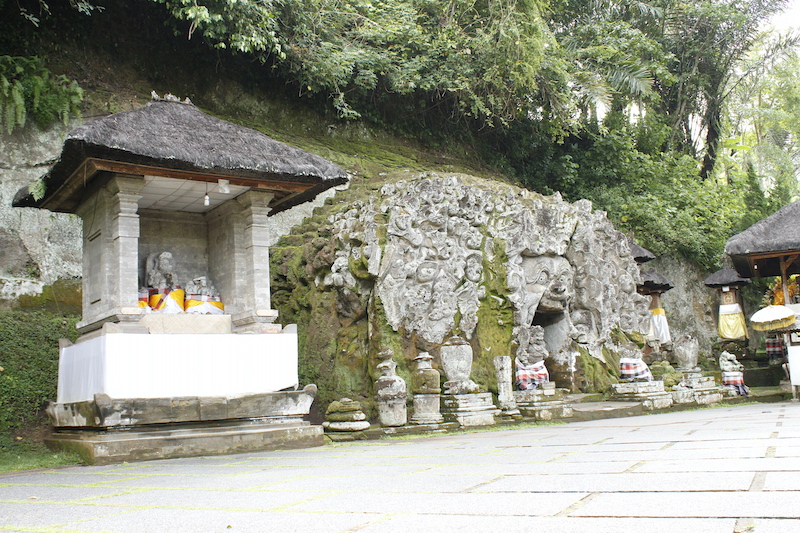
The Goa Gajah complex consists of two main sections. The northern part is linked to Shaivism, featuring the Tri Lingga and Ganesha statues within the cave. In the southern part of the complex, in the Tukad Pangkung area, a thirteen-tiered Buddhist stupa and a three-branched stupa carved into a large stone were discovered by Concrat Spies in 1931. The incomplete state of the stupas is attributed to a disaster that struck Bali in 1917.
Additionally, the Petapan Temple, located to the south above the Pangkung River, houses a Buddha statue believed to date back to the 9th century, serving as evidence of the spread of Buddhism in Bali.
The archaeological findings of both Buddhism and Shaivism at Goa Gajah reflect the religious tolerance of the past, which is still evident in Bali today.
Things To Do At Goa Gajah
At Goa Gajah, visitors can enjoy a variety of meaningful and cultural experiences:
- Explore the site : Take a peaceful stroll through the three main sections of the temple—Jaba Pura (outer courtyard), Jaba Tengah (central courtyard), and Jeroan (inner courtyard). You’ll find ancient architecture, intricate stone carvings, and a deep sense of history.
- Witness Cultural Ceremonies : If you’re lucky to visit during a religious festival or ceremony, you can witness traditional Balinese rituals, where locals offer prayers and make offerings, creating an unforgettable spiritual atmosphere.
- Discover the Mythology : Learn about the captivating legend of King Mayadenawa and Batara Indra, a story that adds layers of meaning to the temple and its sacred waters.
- Relax and Reflect : With its serene environment, lush greenery, and tranquil atmosphere, Tirta Empul is the perfect place to relax, meditate, or simply enjoy the peaceful surroundings.
- Shop for merchandise : Many small art shop that sell beautiful merchandise around the site.
Some caution when entering the temple
If general tourists wish to enter the temple area, there are several rules they must be aware of and follow. This is because the temple’s primary function is not as a tourist site, but as a place of worship.
- Just like in other places of worship, there are sacred objects in the temple that should not be touched or handled carelessly. Never touch any buildings, items, or objects in the temple without permission from the temple’s caretaker or your guide. Some items, like stones on an altar, may seem ordinary, but to the locals, they are considered very sacred. Avoid touching them, and never sit on them.
- It’s also important to refrain from using foul or disrespectful language in the temple, as it is a sacred space.
- When entering the temple, travelers must wear appropriate clothing. This means covering areas that should remain private, such as the chest, hips, thighs, and similar parts of the body.
- Women are not allowed to enter the temple or sacred areas within the temple grounds during menstruation. This rule is important for maintaining the temple’s sanctity and ensuring personal safety.
- It is recommended to have someone accompany you in the temple, or you can hire a local guide to provide accurate information about the temple. Be sure to ask about their rates and agree on the price beforehand.
Entrance Fee
The entrance fee to this site is IDR 50,000 for adults and IDR 25,000 for children. The site is open for tourist and traveler from 08:00 AM until 18:00 PM. the exception for prayers is allowed for 24 hours to enter the temple. Sarongs to wear to the temple is borrowed for free including ticket purchases.
That is the point and information to visit Goa Gajah. Below are more heritage place around Gianyar that interesting to visit.
Other Heritage Temple you can visit : Yeh Pulu, Tirta Empul, Gunung Kawi Tampaksiring, Gunung Kawi Sebatu, Pura Mengening, Goa Garba, Candi Tebing Tegallinggah.
Follow this link to show the map from other Heritage place nearby : 7 most visited heritage Places
[grw id=4544]





